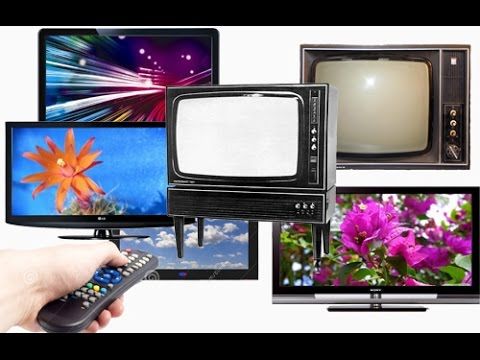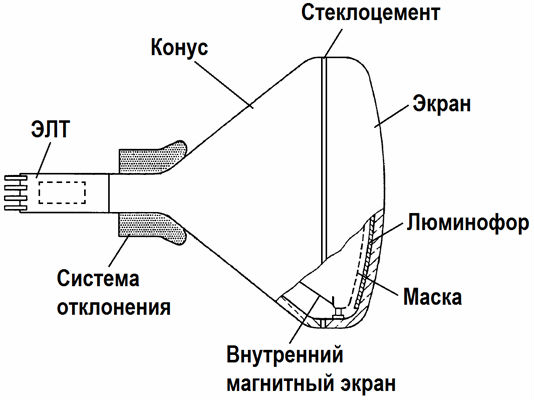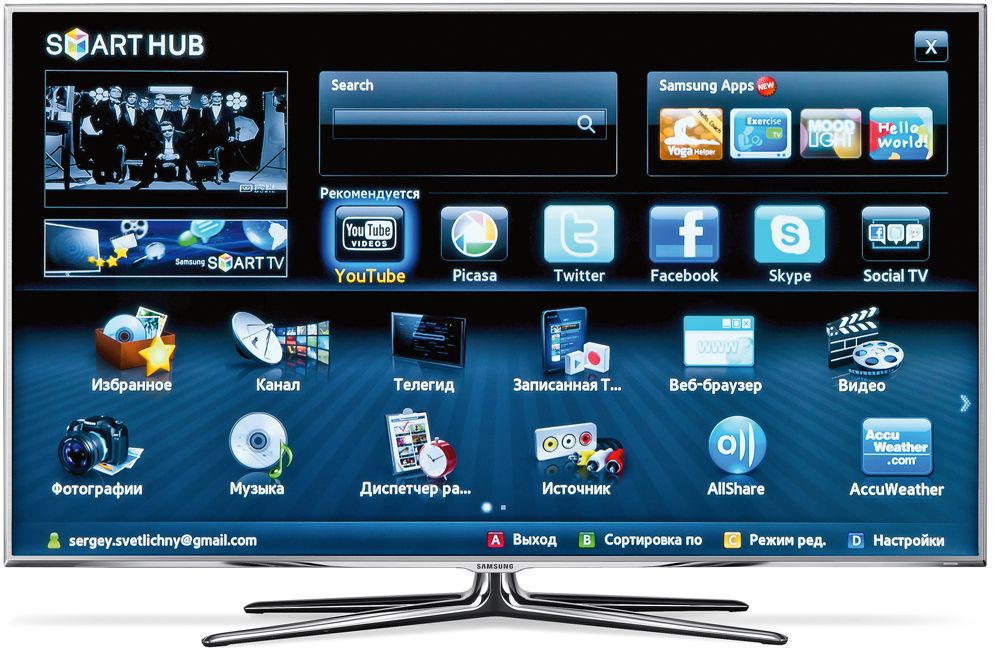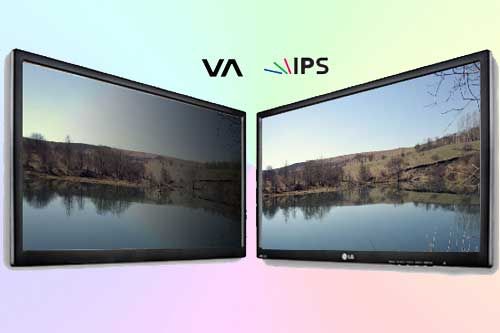What does a TV consist of?
 The desire to somehow implement the transmission of various images over any distance existed in ancient times. But for a long time this was only possible in fairy tales. The first attempts to create a device for transmitting images were made in 1843. Today, advances in the production of TV receivers are amazing.
The desire to somehow implement the transmission of various images over any distance existed in ancient times. But for a long time this was only possible in fairy tales. The first attempts to create a device for transmitting images were made in 1843. Today, advances in the production of TV receivers are amazing.
The content of the article
What is TV and its types
A TV is a device that transmits visual and audio information from various media. Not so long ago, their range was very small, and there was no talk about varieties. We chose according to the principle - color or black and white. But scientific and technological progress does not stand still, and at the moment there is quite a large selection of TVs that differ in many respects. There are nine varieties in total. This:
- with cathode ray tube CRT;
- with rear projection RP;
- projection DLP;
- with liquid crystal display LCD;
- PDP plasma panels;
- with LED backlight;
- with 4K resolution;
- with Smart TV function;
- DVB T2.
They differ in the principle of image formation and in the available functions.
What does a TV consist of?
Whatever the screen and functions, the main components, as well as the operating principle, will be the same. The components include:
- device for image transmission - kinescope, plasma or liquid crystal panel (matrix);
- a board containing a television tuner, decoders, amplifying video and audio signals;
- the case contains all the connectors, control unit and speakers.

Principle of operation:
- A signal is supplied to the antenna connected to the corresponding connector on the case. The received signals are then sent to the tuner, where they are amplified and converted into sound and video.
- The image signal is processed by the color module and converted into the required image format, for example, PAL.
- The audio signal is also amplified, converted from an electrical signal to acoustic sound, and sent to speakers.
CRT TV device
This variety has been ubiquitous for many years. Despite the fact that they are inferior to modern models in terms of various functions and image quality, they have a significantly longer service life and much lower cost.

The image on these models is carried out using a cathode ray tube. It seems to shoot streams of rays that fall on a screen covered with a layer of phosphor. The threads are divided into lines, which appear on the screen one by one. In just a second, 25 lines - frames - are obtained. The resulting integrity of the image is determined by the structural features of the human nervous system. The larger the screen, the more visible the flickering of the drawn stripes is.
Despite their size and lack of additional functions, they are still in stable demand.
REFERENCE! CRT TV receivers are especially popular for children's rooms, since their heavy weight makes them very difficult to drop.
Features of LCD TV receivers
At the moment they are the most popular. The devices come in different sizes, but they are very light, thin, do not take up much space, reproduce high-quality images and have a large number of functions.

The panels of such receivers consist of two layers of polarized glass, which are glued together. A special viscous liquid, consisting of molecules arranged in a strict order, polarizes the glass under the influence of an electric field and light rays.
Design and features of plasma panels
They are second in popularity after LCD receivers. They are inferior in that they do not have small diagonals, consume a significant amount of electricity and get very hot.

The image is formed due to the effect of ultraviolet radiation on phosphor particles. An electric discharge passes through gas - xenon and neon, resulting in a kind of plasma corridor. On the inner surface of the panel there are semiconductors, with the help of which the image is scanned.
LED TV device
These devices are a type of LCD receivers. They differ in that the screen is illuminated using LEDs. Diodes can be located around the entire perimeter of the matrix or on its sides. Due to them, such devices produce a very clear picture, which is completely free of flicker.

Features of the digital DVB device - T2
There are several television signal broadcasting standards:
- analog;
- digital;
- satellite.
In order for the TV to reproduce the desired signal, a tuner is installed that will correspond to the accepted standard.
DVB-T2 tuners allow you to view a digital signal.Now it is the most widespread, so these decoders are installed on all manufactured models.

REFERENCE! CRT televisions are usually not equipped with a digital decoder.
SMART-TV device
More recently, cell phones have amazed us with their functionality, as they have changed from being an ordinary means of communication to becoming a multi-functional device. Now this path is being repeated by TV receivers. From a simple device for playing video and audio, they have turned into a self-sufficient entertainment center. The name Smart TV can be translated as “smart TV”. The technology consists of combining the functions of television and the Internet. Such smart receivers are made on the basis of LCD or plasma TVs. They are additionally installed with an operating system, a Wi-Fi modem, a browser, a store with various applications, films and programs for listening to music.

The currently presented range of TV receivers allows you to choose the optimal model with all the necessary parameters.





